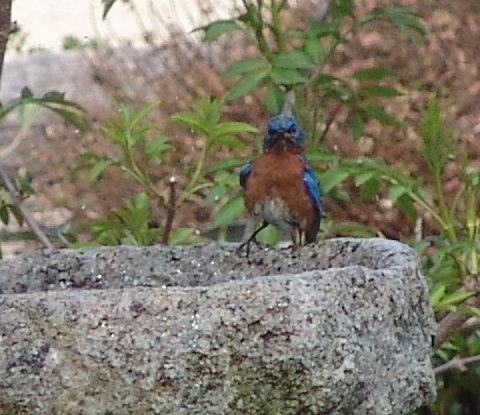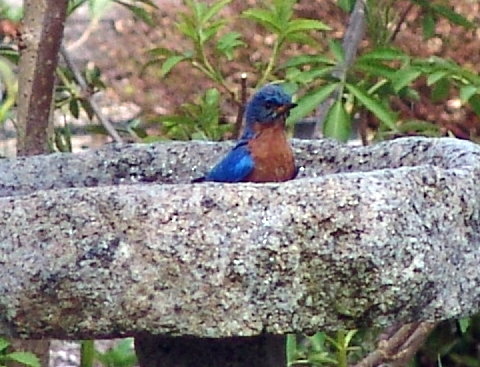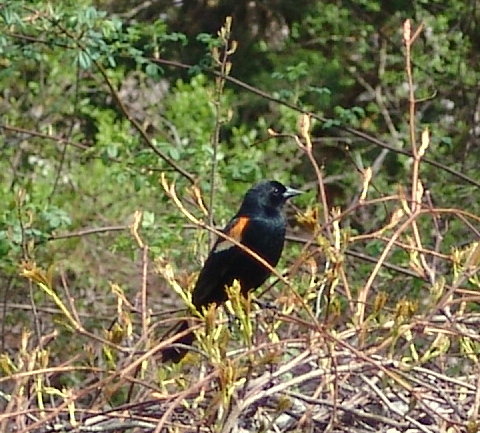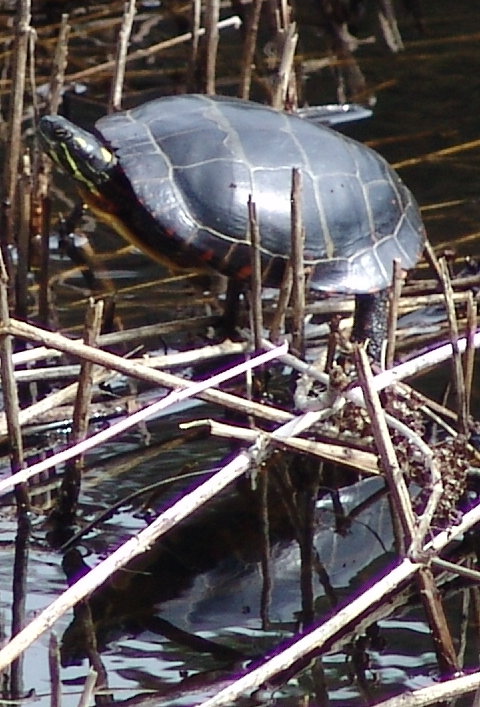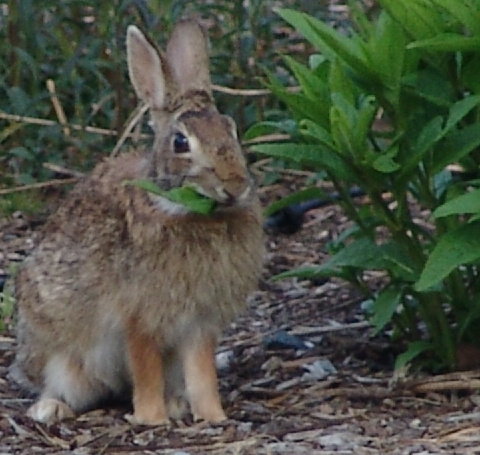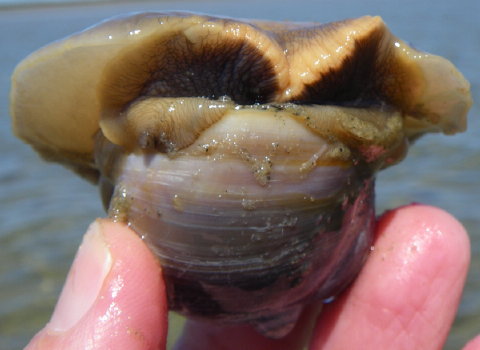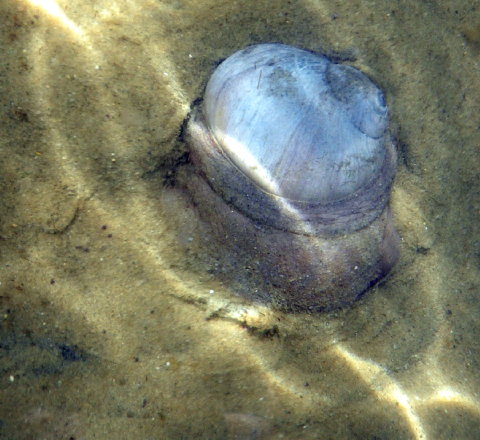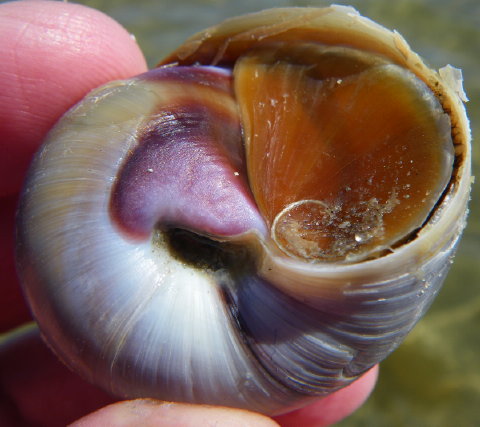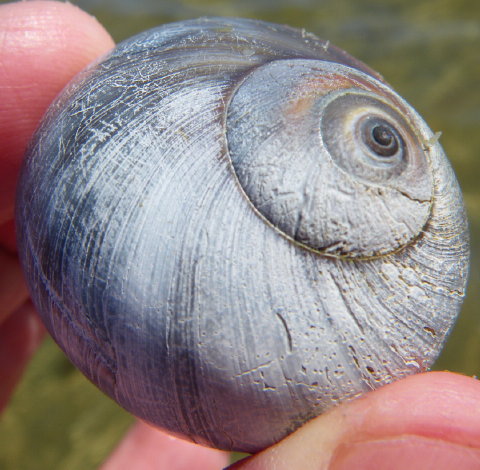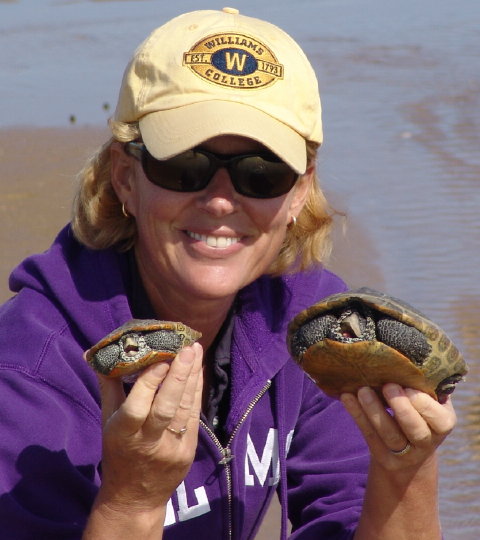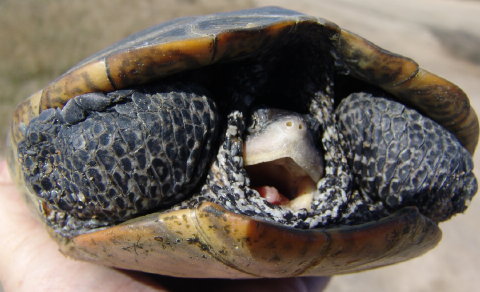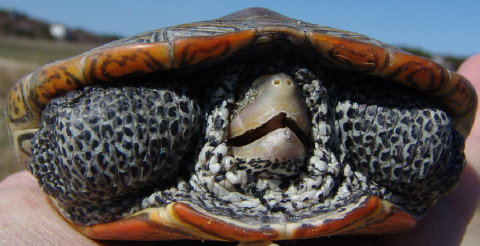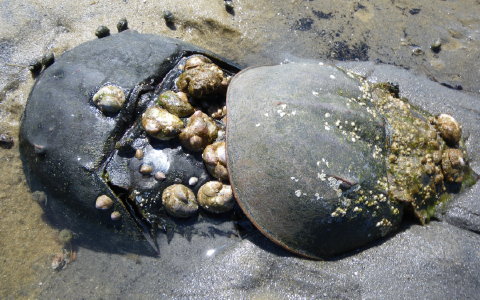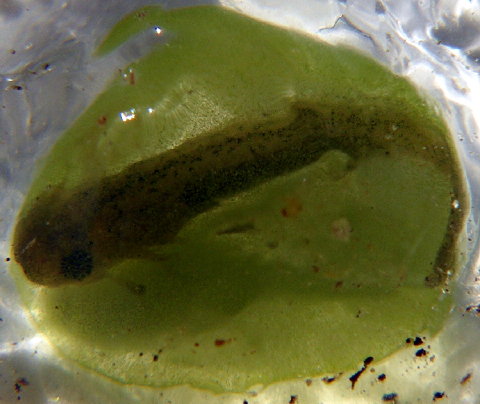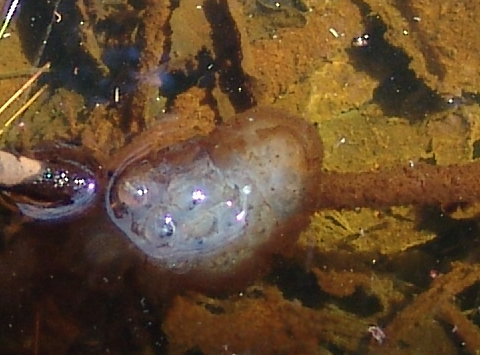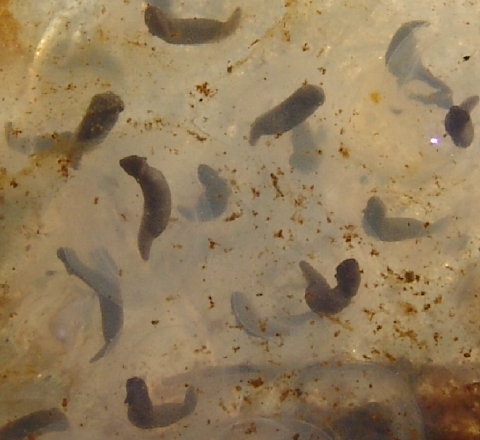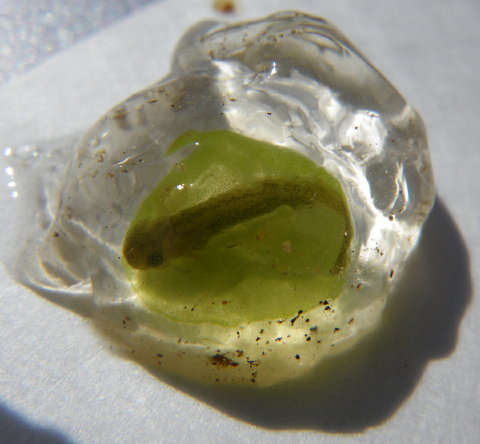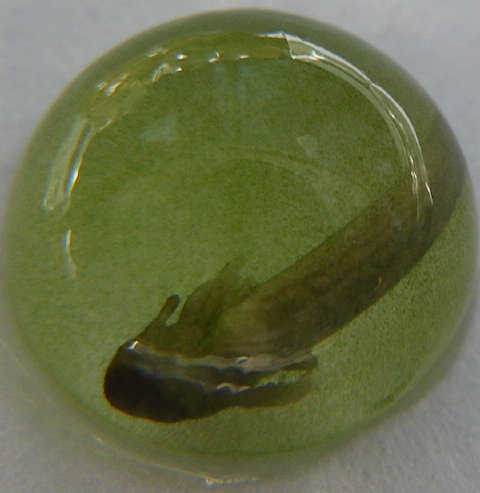Brief Visit to Wellfleet Bay Wildlife Sanctuary
Blue Bird of Happiness? You’ve Gotta Be Kidding
Okay, it was a tough day. The forecast said warm and sunny. The weather delivered chilly and overcast with stiff northwesterly winds. So, it was the perfect spring day we had been promised. So, not a single diamondback terrapin woke from burrowed slumber underneath the oozy bottom of Wellfleet Bay. So, mating horseshoe crabs had plowed under layers of muck to stay warm. Still, is that any reason for the blue bird of happiness to have a chip on its shoulder?
One Really Grouchy Blue Bird
After a really frustrating couple of hours surveying Chipman’s Cove for terrapins, Turtle Journal headed for Mass Audubon’s Wellfleet Bay Wildlife Sanctuary for a few minutes of decompression. As soon as we arrived, we heard that a cold-stunned diamondback terrapin had washed ashore on Sunken Meadow Beach! We searched for Eastern box turtles that might have emerged from brumation, but with no success. Then we visited the butterfly garden to see what amusing, happy critters might be found and this blue bird of happiness (sic) greeted us. Not exactly what we were looking for.
Painted Turtles Basking in the Shallow Pond
We moved on to the shallow pond at the entrance to the walking trails and spied four painted turtles basking in the filtered sunlight. No question; we were moving in the right direction on the happiness compass. These critters were almost smiling; well, as close as a turtle in stupor comes to smiling, anyway.
Red-Winged Blackbird
Above the quartet of sleeping turtles sat a red-winged blackbird in alert sentry. We moved down the path to the Silver Spring trail where one can always find something to ogle.
Delicately Balanced Painted Turtle
In Silver Spring we encountered another sleeping painted turtle clearly auditioning for Cirqe du Soleil. She had managed to delicately balance herself on a set of reeds with only her left rear foot to provide support. She let me approach within a few feet for the photograph without so much as ackowledging my presence. Like any self-respecting turtle, had she actually acknowledged my presence as a threat, she would have had to plop down from the reeds … and then laboriously climb back again after I departed. What a drag! So, she ignored me, instead.
Thumper!
We did find one critter that seemed to enjoy this day at the Sanctuary:Â Thumper!
What’s Up, Doc?
Now, that’s a contented rabbit. “Maybe humans call it a butterfly garden, but I call it Supper!”
